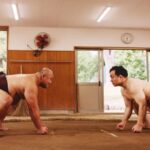Many golfers still struggle to get to a driving range during the day. Maybe you have to work during the day, and your weekends are full of regular golfing rounds at best, spending time with friends and family, or engaging in other activities. Perhaps, you find it easier to just sneak out to the range at night. However, going to the range at night has its challenges.
In this post, we’ll go through how to hit golf balls at the range during night time, as well as the things you can do to get the most out of every session.
Challenges of Golfing at Night
Some ranges have limited space, forcing them to use balls specially made to travel a small distance, so that they don’t fly out of the range and fall into the surrounding properties. Aside from these range balls with limited flight, normal balls usually don’t go as far as the regular balls do.
This is according to a study by Golf digest in June 2014, where they pulled sample balls from practice ranges in different parts of the country, which were then tested against nearly new Titleist Pro V1s.
The result?
Well, range balls were found to have a wider range in distance. For instance, the Pro V1s landed from between 274 to 286 yards with a driver swing speed of 105mph, while the range balls landed between 254 to 282 yards, which amounts to an average of 12 yards less.
Unscientific comparisons at a popular online golf forum also had similar findings. Golfers reported range balls to fly about 5% to 15% shorter distance compared to the regular shots.
Cold Temperatures
The low temperatures at night can also affect the behavior and distance of flight. Golf balls are typically affected by cold weather based on the “coefficient of thermal expansion”. In other words, physical objects will behave differently when they contract or expand in varying temperatures. Plus, golf balls need some time to warm up.
When you’re hitting the balls on a range at night and it’s about 45 degrees outside, the golf ball might even be colder. Additionally, cold air influences the golf ball as it travels through the atmosphere.
In an interview with Golf Digest, Frank Thomas, a former USGA technical director, said that there’s a difference of about two yards for every 10 degrees of difference in temperature. For example, in Washington D.C., the average daily temperatures for an entire year is about 65 degrees, while that of the night is 46 degrees. Here, a range ball would fly an average of 4 yards shorter during night time.
Lighting Changes
On the range, temperatures aren’t the only thing that affects your game at night. Lighting has a major role as well. Keep in mind that most ranges are lit using floodlights placed on tee-area roofs or poles. This method is preferred as it lights the balls from the golfer’s perspective, which makes it easier to see. Inject some fun into your night game with LED golf balls. Take a look at www.premierglow.com/night-golf.
However, if the floodlights are too low, it creates a glare, which is a major problem. Moreover, the wattage is inconsistent, since most installations have metal halide lights with around 1000W to 1500W, often with poor lighting controls. The result is excessive glare and a lot of spill light. You will have a much better vision at ranges where the lights are mounted higher – a lot higher than the normal 7 to 14 yards.
The light also needs to be aimed properly, not just shining out straight. There should also be some special optics to help control glare. Some of the higher-end ranges have started installing the much better LED lighting. LEDs have excellent brightness, which lowers glare significantly.
The bulbs are also a lot more durable, and can last up to 50,000 hours, which is about 30 years of actual. LEDs are also much colder compared to metal halide lights, which helps the range to save money and use much less energy. According to experts, nearly all ranges will be using the LED lighting while the older systems are renovated.
Stay Focused While You Have Fun
For many golfers, going to the range is a social activity. We like to go there to meet our friends, catch up with what’s going on with their families, work, and everything else except golf. While one of the best part of golfing is that it creates the perfect time to bond with friends, try going to the driving range to improve your game.
This could mean taking some alone time to help you focus on the swing, and you’ll start to really feel the changes you’re making. To make you night time range session entertaining, consider pretending that you’re playing a full 18-hole round. You can use the different targets on the range as imaginary holes and play them as you would in a real-life golf game.
As an example, for a longer par 5, use your driver to shoot the first shot. Use a fairway metal for the second shot, and then proceed to a shot iron shot. Use this plan for all the different par 3s, par 4s, and par 5s as you go, and try to play the imaginary round with great attention to detail. Try to visualize each shot from behind the ball before playing it, just as you would in a real game. Also take the same number of practice swings as you do on the course.
Replicating a real game on the range as much as possible will make an imprint in your brain of all the strategies and tactics that you’ll need when playing a real match.
Putting and Short Games
When many golfers hit the range, they hit 80% of their shots with their driver and fail to go to the practice green for the short game. This typically shows up in their Sunday game when during a round, they easily hit the ball over the green, then miss easy putts continuously. So, make sure that you’re spending a generous amount of time on the short game area and putting the green.
Over 60% of golf shots in a round will take place within 600 yards of the green. Improving your putting and short game skills will help you make a faster impact on your game, and quickly shed some stroke from your average score.
Fun Focused
Ever been playing a great round of golf and out of nowhere you get a bad hole and the “wheels are off”? Well, while this will happen to every golfer at some point, if it happens regularly, you can be sure that it’s being caused by inconsistencies that you can easily iron out at the driving range.
Once you get to the driving range at night, ensure that you stay focused on the different areas of your game that you want to improve.






